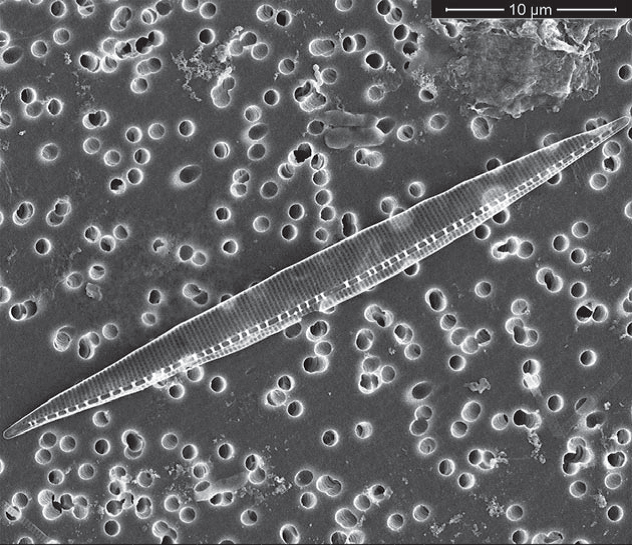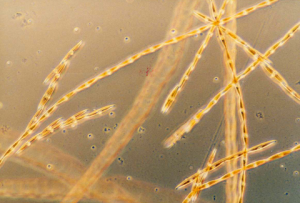Sponsored researchers with the NCCOS ECOHAB project looking at regional harmful algal bloom ‘hotspots’ off coastal California are testing the feasibility of using a robotic water quality and toxin detection device,the Environmental Sample Processor or ESP, to collect the glass cells (silicon frustules) of the diatom Pseudo-nitzschia for species identification and assessing geographic distribution.

Certain species in the diatom algal genus Pseudo-nitzschia (PN) produce the neurotoxin domoic acid (DA), the cause of amnesic shellfish poisoning illness in humans. Scientists estimate some 40 PN species world-wide, most of which have an unknown geographical range; about 15 of these species are known to produce DA. Accurate identification of PN species is difficult and requires an electron microscope (EM) or application of molecular methods.
The researchers, from Monterey Bay Aquarium Research Institute and NCCOS, noticed that filters the ESP used to extract and measure DA concentrations in seawater often contained diatom frustules in a condition good enough to be identified at the species level. They identified PN species processed and stored up to three months under these conditions.

Although the ESP currently fits with special molecular probes that identify several PN species, this research shows the ESP’s toxin detection capability can be usedfor identification of these and other PN species, and diatoms in general. Most importantly, PN species recovered from toxin detection filters and identified by EM can directly link to DA levels measured by the ESP.
The ESP is becoming a powerful new tool for identifying PN species, PN community structure, and PN biogeography. Innovations associated with continuing use of the instrumentopennew sampling strategiesspanning time and spatial scales not currently possible with traditional monitoring methods. In addition, we can now link certain PN species to DA outbreaks.
Read about the new finding in the Journal of Phycology.
For more information, contact Greg.Doucette@noaa.gov and Quay.Dortch@noaa.gov.
